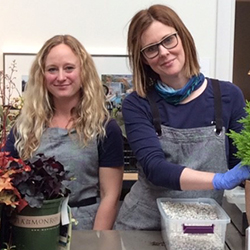
Original Post by Megan Nichols and Jessie Jacobson of Tonkadale Greenhouse, Minnetonka, MN.
Fall is when cold-region gardeners say "thank you" to their tropical plants. They've been beautiful and flowery and leafy all summer long. But what is a gardener to do with their favorite, showiest warm-region plants? Especially as the days get shorter and the nights cooler. Your garden center experts may say it's okay to let some of them go to the compost with the frost. However, some of your favorites can also be moved indoors for the winter.
You may have heard that having plants in the house provides many benefits to humans. It turns out you're not limited to plants that are solely marketed as "houseplants." Many tropical plants do well overwintering indoors as houseplants, too! "Foliage plants" like elephant ear, cordyline, banana, begonia, and schefflera. For instance, are pretty happy if given the right indoor conditions. Flowering tropical plants, like hibiscus and mandevilla, may need a bit more care.
Most tropical plants do well if allowed to go into dormancy in a cool space, like a garage or basement. One that is protected from the coldest winter temperatures, and given the right amount of moisture. Get more details below about how to overwinter your tropical plants—whether as houseplants or in dormancy. Also, which plants we think are well worth the effort.
7 Tips (and Tricks) for Overwintering Tropical Plants
Tropical plants like the same conditions as humans. Under 50 degrees and they’re less than happy. To avoid stressing them, bring them indoors at the first sign of cool evening temps. But, before you haul them indoors, make sure they’re safe for the pets and kiddos in your life. (Our post on creating a dog-friendly backyard includes a link to a full list of pet-safe plants.)
1. Treat for pests
Outdoor plants often become home to ants, pill bugs, or other insects better left outdoors. Spray both the soil and the entire plant (leaves, stems, etc.) with insecticidal soap a week or so before you invite them into your home.
2. Re-pot if needed
Much easier outside than in, right? Repot in a container that's at least one (two is better) size up from the current one. Use fresh potting soil and make sure your container has a drainage hole. It’s recommended to leave houseplants in their grower pot or plant them in lightweight plastic containers called liners.
3. Wash and wipe
Leave the dirt outside. Start by wiping larger leaves with a damp cloth and if leaves are smaller, hose them down. For some, it’s nice to apply a product known as leaf shine. Makes the leaves, well, shine. Do read the label as some plants including dracaena and ferns don’t fare well with this product on their leaves. Use an air duster or a small paintbrush to clean the leaves of cactus and succulents. Finally, clean off dust and grime from the exterior of the pot.
4. Style your plants
Choose fabulous containers like baskets, buckets, and ceramics to drop your liners into – preserving the drainage while showcasing your specimen. Make sure to reinforce the inside of your container with a plastic saucer so they don’t leak. Hang, the group, combine, mix and match and/or display at different heights. Plant collections are the new cool—learn updated style tips for an indoor conservatory. Also see how large plants can instantly elevate your space. Or follow @tonkadale and @monroviaplants on Instagram for more inspo.
5. Fertilize at half strength
Just read the package directions and cut it in half. And, feed less often. A water-soluble fertilizer is fine, or use a compost tea brew. Hint: add a few drops of peppermint oil to your brew to make it smell fresh, not funky. This also helps keep pets away.
6. Foliage plants are easy
Easy-care plants that do best indoors are generally varieties prized for their foliage. They can handle lower light conditions indoors. General light classifications are low, medium, and bright. Have you used fiddle leaf figs, crotons, pothos, philodendron, sansevieria, ivy, or spider plant? Alternatively, just about any other variety of plant prized for its leafy greens or golds, or reds or purples? Re-pot and invite them to stay indoors for awhile.
7. Succulents are also welcome indoors
For cold-climate dwellers, it may come as a surprise that succulents and cactus can actually handle a little cold. Deserts are cold at night! These can stay outside a little longer to take full advantage of the sunlight. Be sure to bring them in before they become popsicles.
Overwintering Flowering Tropical Plants
The easiest way to overwinter most flowering tropical plants is to let them go dormant in a cool space
Let your plants rest in a cool place (40° to 50°F) with little or no light. Their leaves will gradually yellow and drop. They can then spend the winter in an unheated basement, unheated garage, or even a cool closet. Water sparingly—about twice per month. You can also dig up the rhizomes or bulbs, clean off the soil, and check for disease. Then store the healthiest ones in a bag with peat moss or wood shavings. Keep them in a cool space. Basements, crawl spaces, and garages are all great options for overwintering your dormant tropical plants.
Some flowering tropical plants can be kept indoors as houseplants
Some varieties that require a lot of light can be more challenging to overwinter. This includes tropical hibiscus, mandevillas, jasmine, bougainvillea, calla lilies, and cannas. (Tropicanna® cannas are pictured above). They require a sunny window in a room where the air temperature stays about 60-70°F. Plus a humidity level between 30 and 45% (mist leaves or place a pan of water among the plants). If you want to keep them as houseplants and maybe even coax a few blooms, follow these instructions below. (Success is generally a cross between the right conditions and sheer luck.)
Tropical Hibiscus: Prune hibiscus 3 times between now and spring. First at the end of October, then again in December, and in February. Cut back each stem by about 50 percent to maintain good shape, and keep the plant from becoming leggy. Set your calendar reminders and just do it.
Mandevilla, Jasmine & Bougainvillea: They’re likely in flower now, but flowers will diminish quickly as the days shorten. Prune back by about 25% so they don’t have to work so hard to keep their long vines alive. Don’t be alarmed if they drop leaves–just continue to care for them and they will re-leaf in time.
In cold climates, keep the humidity below 30% to avoid condensation on your windows. The ideal winter environment for most flowering tropical plants would be approximately 50°F at night and 65 degrees during the day. Don’t be tempted to jack up the heat, as warmer air temperatures can lead to leggy growth and insect problems.
Feeling bad about failure is not allowed. It’s not the end, it’s just the beginning of a trip to your favorite garden center for new indoor plants.
Plant plants (even indoors). It’s important.
Favorite Tropical Plants That You Can Overwinter Indoors
Flowering Tropical Plants to Overwinter
Captain Solo
Calla Lily
Bright yellow flowers above a compact, lush clump of thick, sword-like foliage from late spring through midsummer. Adds an exotic, tropical flair to any entryway, porch, or patio. An easy-to-grow and impressive cut flower. A frost-tender herbaceous perennial in warmer winter regions; may be overwintered indoors in colder regions. Partial to full sun. Up to 12" tall and wide. Zones 8-1.
Sunvilla™ Red
Mandevilla
Bold red flowers with a yellow throat last longer without fading. A vigorous vine with glossy, dark green foliage that climbs onto a trellis or arbor, and will drape over fences. A frost-tender evergreen; bring indoors in cooler regions. Partial to full sun. Twining stems up to 20' long. Zones 9-11.
Jazzy Jewel®
Gold Hibiscus
An excellent selection of tropical hibiscus that's exclusive to Monrovia, producing a prolific amount of large, bright flowers. The incredibly long-lasting blooms and dark-green foliage contrast to create an eye-catching combination. Full sun. Up to 5' tall and wide in the landscape where hardy (smaller when grown as an annual or in a container). Zones 9-11.
Tropical Plants to Bring Indoors as Houseplants
Goldfinger™
Hardy Schefflera
Assuredly the hardiest and rarest species of its clan! Hails from the slopes of the highest mountain in Taiwan. Sensational, pinnate foliage along yellow stems, it makes a superb container plant indoors and out. A Monrovia exclusive and part of the Dan Hinkley Collection. Partial shade to full sun. Up to 12' tall and wide (smaller in a container). Zones 7-10.
Red Leaved
Banana
A stunning palm-like plant with huge, broad leaves that fan out from a single trunk. Bold-colored foliage has wine-red and bronze tones with prominent venation. A popular choice for tropical-inspired gardens. Perfect for large patio containers. Evergreen in frost-free climates, bring indoors in cooler regions. Partial to full sun. Up to 15' tall, 10' wide (smaller in containers). Zones 10-11.
Royal Hawaiian® Hawaiian
Punch Elephant Ear
Striking bright green leaves with bright red stems adds bold color and tropical flair to any garden. A wonderful choice for the edge of a pond or water garden. A dramatic choice for patio containers, which can be brought indoors in cooler regions. Filtered to full sun. Up to 36" tall and wide. Zones 7-10.
Bird of
Paradise
Highly valued for its large, exotic, colorful blooms in a bold blend of orange, blue, and white. Lends a tropical look to any landscape. A long-lasting flower for cut arrangements. Crowns of long stalks with large grey-green leaves provide year-round interest. Partial to full sun. Up to 5' tall and wide. Zones 9-11.
Tectonic™ Caldera
Begonia
Massive, glossy, heart-shaped leaves emerge red and swirl open to bright green. An enormous variety in its native range in northeastern India, with leaves up to two feet wide! Will make an impressive specimen where hardy if given plenty of space. Partial shade. Up to 6' tall and wide (smaller in containers). Zones 8-11.
Festival™ Raspberry
Cordyline
Arching, strap-like, burgundy leaves have a bright raspberry edge, adding dramatic color and texture to the garden. Small white flowers appear in summer. This compact selection performs beautifully in shaded areas or dappled sun; tolerates morning sun. Up to 3' tall and wide. Zones 8-11.
Photo by Anthony Tesselaar
Final Thoughts on Overwintering Tropical Plants
Another great specimen container that can be brought indoors. This Pindo Palm (paired here with a firecracker plant) is happier indoors as fall temperatures dip.
Know that growth and blooms on overwintered tropicals will appear later in the season. Compared to a grab-and-go container from the garden center.
Water carefully. Often our heated homes become quite dry, which can cause plants to lose moisture quickly. However, plants aren’t actively growing during the winter months so they don’t require as much water. Test the soil using the tip of your finger, if the top inch is dry go ahead and water. Practice makes perfect.
Watch for pests. Mealy bug, scale, aphids, and others all show up at the darndest times—like January (how do they do that?). Treat with insecticidal soap or neem oil. Read the directions.
About Tonkadale Greenhouse:
Tonkadale is a design driven garden center located in Minnetonka, Minnesota. Pollinator friendly. Kid friendly. Dog friendly. Always original. Always approachable. Your greenhouse home.





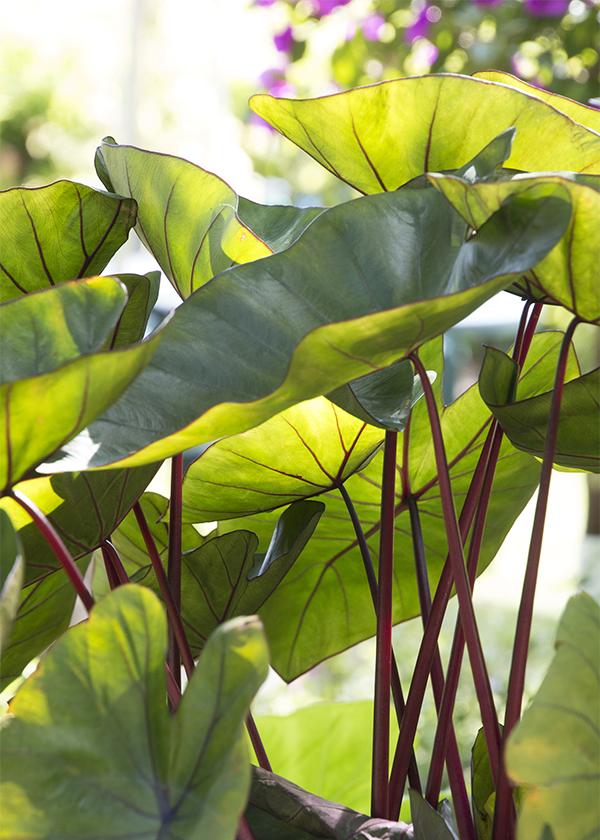


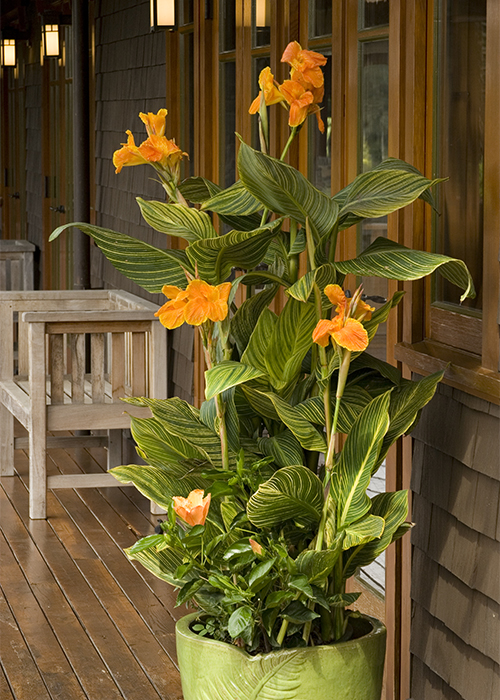
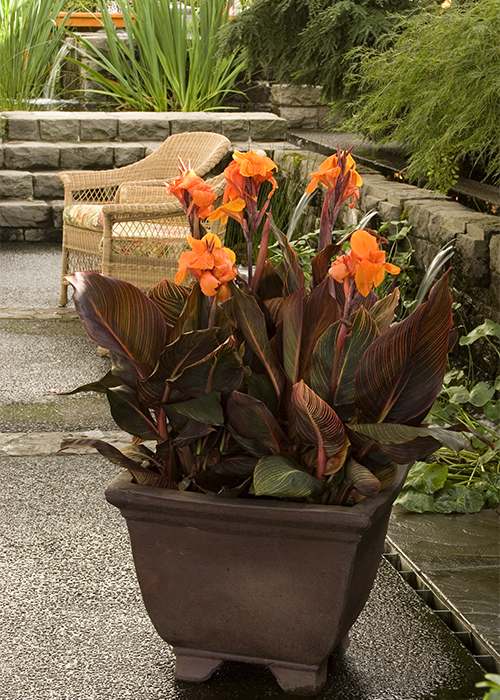
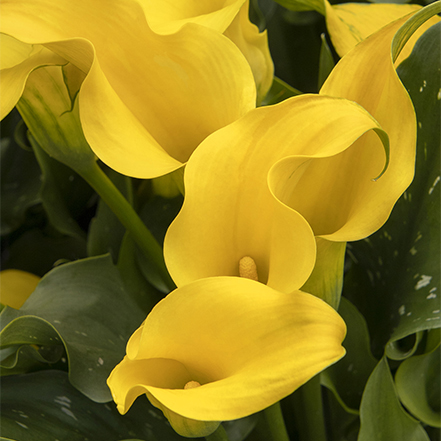
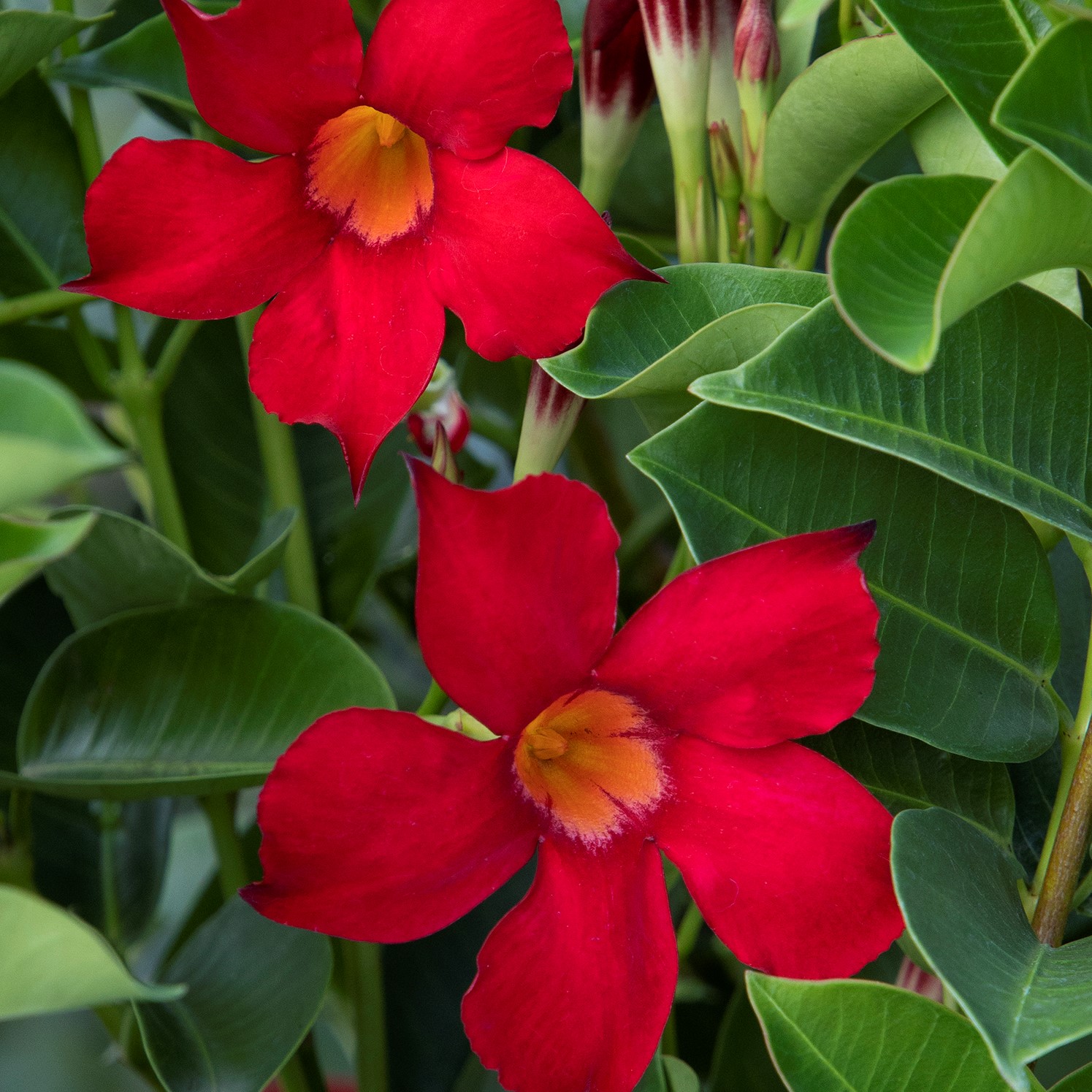
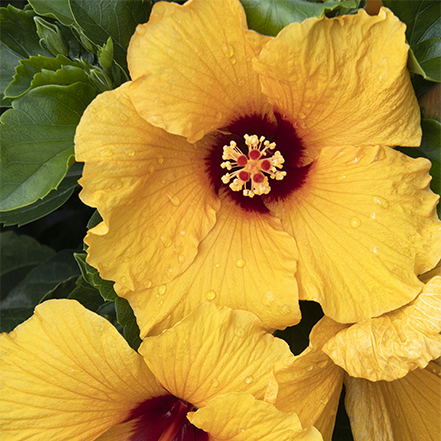
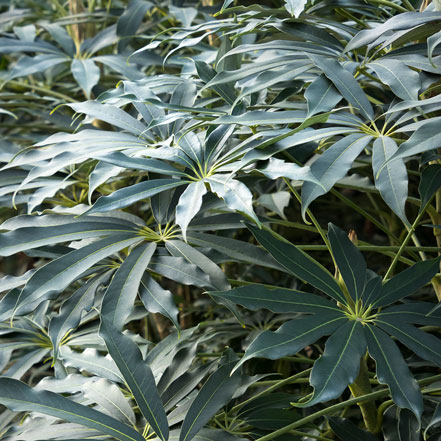
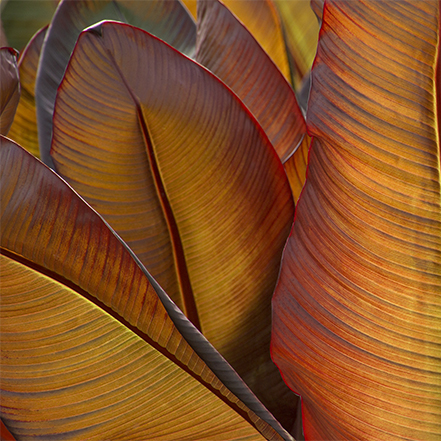
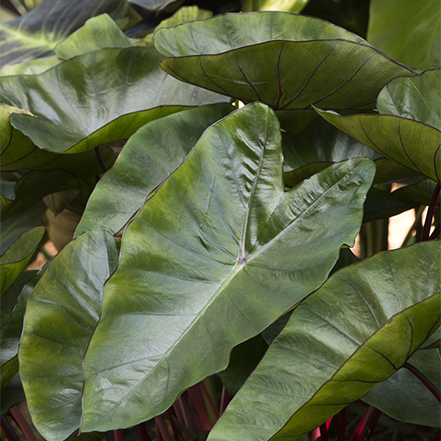
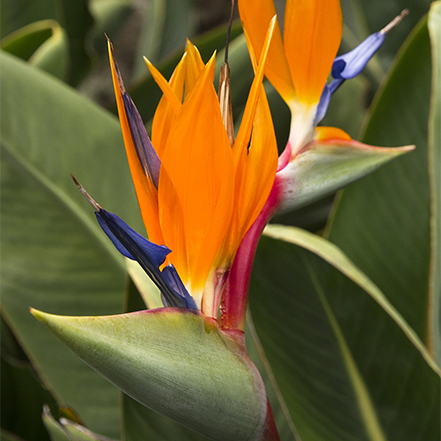
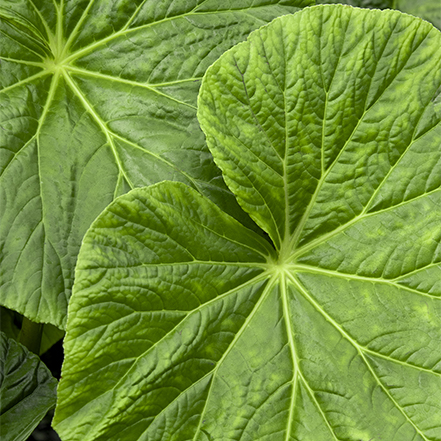
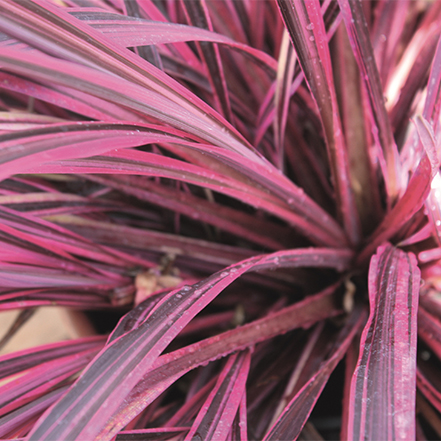
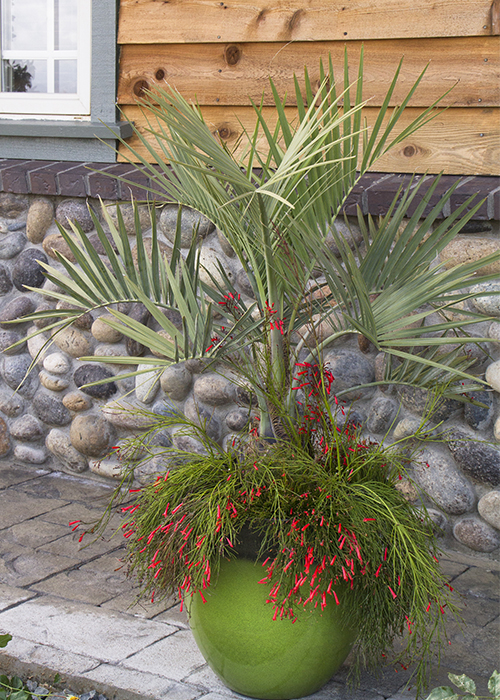
Please login to comment.
Don't have an account?
Sign Up for free